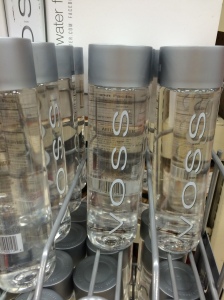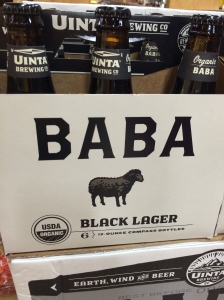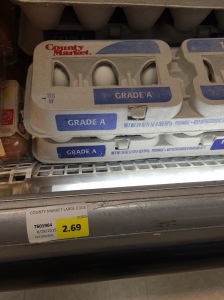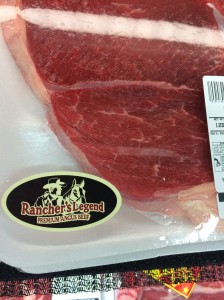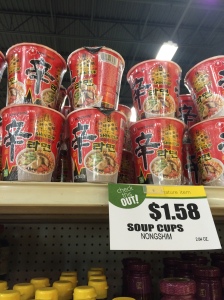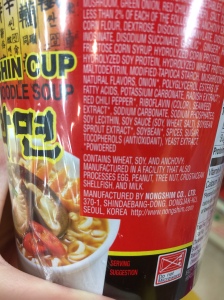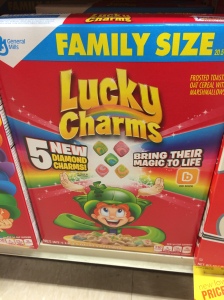THE PROS AND CONS OF “BIG AG”
My second post to the IL Corn “Corn Corps” Blog page.
Top 5 Tips for Effective Communicators
Recently, I had the honor of attending the Agricultural Future of America Leaders Conference in Kansas City, Missouri. During this conference, I was able to learn from numerous professionals in the agriculture industry, and each professional, no matter their position or background, had something to contribute to the conversation when it came to communicating their company’s message. After listening to several of these sessions, I have compiled a list of the five best practices to communicate across generations and cultures.
- Understanding culture and language keep from misunderstanding.
It’s no secret that agriculture has changed from when our grandparents were involved. Being the global industry that it is today brings about some challenges, like cultural and language barriers. However, by understanding these things before communication begins, you can ensure your message is well received by the other party.
- Culture and language can differ between generations of the same country.
Think about the last time you talked with your grandparents. Did you use the term “basic” or “chill” to describe anything? Did you talk at the same volume and speed as you talk to your friends? Chances are you did neither, which is what I’m saying: people of different generations are going to understand things differently than people of the same generation. Learning how the other side communicates can bridge this communication gap in no time.
- The minute you become defensive, you’ve lost the battle.
This problem shows up, especially when we communicate about agriculture. The reason almost all of us got into this industry is because we have an undeniable passion for it. However, this passion can be a double-edged sword. On one hand, showing producers care about the animals, the earth, and others can make the difference when showcasing modern agricultural practices. On the other hand, being defensive and aggressive about these practices can make consumers even more defensive and aggressive. It’s best to keep a cool, calm, and collected exterior when talking with consumers, even when they’re not. This leads me to my next point…
- Never fight fire with fire.
Ah, the Golden Rule. A great example of this action is the recent E. coli outbreak at several Chipotle restaurants across the country. Even though it’s easy to badmouth them when they have run modern agriculture into the ground, it reflects poorly on our character. Be the bigger person, especially in disease outbreaks like this, when it easily could have been a business that supports modern agriculture.
- Shut up and Listen
I cannot say this one enough. Communication is a two-way street. You can talk about something until you’re blue in the face, but if the other party cannot understand your message, you’ve wasted everyone’s time. By sitting back and listening to what consumers have to say, you can reach an understanding of what needs to be said back to consumers, and more importantly, how it should be said. That way, everybody wins.
What are your communication tips?
There’s Always Next Year.
There’s always next year.
This is the signature sendoff at the end of the season for the Chicago Cubs.
Yesterday, as the Cubs attempted to dig themselves out of the 0-3 hole in the NLCS, I donned my Cubs hat and oversized Cubs shirt to show my support for my team, and was met with apologies from others.
“Aw, there’s always next year,” they said sympathetically. I simply nodded and smiled, because they were right; there is always next year.
But quite honestly, I wouldn’t have traded this year for anything in the world.
This Cubs season was anything short of amazing. Not only ending this season with ninety-seven wins as the third best record in the league, but ending the seasons of the number one and number two teams.
My personal favorite memory from this past season was beating the Cardinals in the NLDS, something that had never been witnessed until that point.
Now, I do have to get up on my soapbox for a bit.
To the Cardinals fans who took losing to the Cubs in the postseason with grace, we thank you.
For those who were bitter, rude, and obnoxious about the loss, we chuckle, thank you, and offer some advice: take note from (most) Cubs fans on how to be graceful losers. We’ve spent a little over 107 years perfecting the art.
And to the Cardinals fans that mocked Cubs fans for being “too excited” for winning “just the NLDS,” just give it a rest.
We get it. You make it to the postseason all the time.
Winning in the postseason is old hat for you; it’s “expected.”
For us, however, this was new, uncharted territory, and we couldn’t have been happier about it. So, next time you’re faced with this dilemma—which could very well happen again next season—just be graceful, would ya?
Okay, now back to the good stuff.
When Ernie Banks passed at the beginning of this year, he joined some pretty good company upstairs—Harry Caray, Ron Santo, and most notably for this Cubs fan, Emma Novotney, Dan Drapp, and Larry Novotney.
As I’ve mentioned before in a previous post, my love for the Cubs stems from the connection that I had with my father. Even though this season was cut short, I know he was sticking his chest out with pride knowing that he could finally admit to the world that he was not “just a baseball fan,” but a Cubs fan as well.
This picture made an appearance the night the Cubbies clinched the NLDS.
It was so special to watch this young team play so competitively this season, but it was even more special for me to know that crew upstairs was also watching with a smile.
The Cubs might be done for 2015, but that’s okay.
Spring 2016 is coming, and if it’s anything like this season, it’s going to be pretty spectacular.
Perspective
In my Agriculture Communications class at the University of Illinois, we work to help others see things from our perspective. The goal for advocating for agriculture, or “Ag-vocating” is to tell our story in agriculture to the consumer. Agvocating hopes to create a better understanding of practices and methods used to produce foods, fuels, and fibers.
Before I left home for school this fall, I stopped and talked to a former teacher of mine. Mr. Adams is a teacher at Seneca High School in the Social Studies department and was, hands down, my absolute favorite teacher in high school—besides my Ag teachers, of course.
In addition to teaching us the basics of how our government is set up to work, Mr. Adams pushed us to look outside of our perspective and encouraged deeper thinking.
During our chat before I left for school, we talked about perspective. “People always say, ‘if only they could see things my way,’,” he said. “’Then things would be different; they’d be better.’”
So often, we think our way is the best way—nay, the only way to do something. It’s our way or the highway.
What’s worse is that we view others who don’t see our perspective as ignorant, even if we’ve never taken the chance to look from their point of view.
Take, for instance, this meme.
I recently had several friends on Facebook who shared this meme. These friends are involved in agriculture in some way; most of them farm or have livestock of their own.
Because of this hands-on experience, they can see the job of feeding and taking care of 80,000 cattle at once from a different perspective. This perspective differs from that of, say, someone from a suburb that has little to no interaction with production agriculture.
However, these friends in agriculture have little to no interaction with life in the suburbs. Therefore, they don’t understand why anyone would want to live in proximity to masses of people.
Now, my question for you is how could a consumer from the suburbs and a farmer from the country have anything in common?
Misunderstanding.
Both have a mutual misunderstanding of how the other side lives. This misunderstanding creates a void between the two in which ignorance can blossom. This vicious cycle continues with no true hope of stopping.
Now, why can’t we all just get along?
Because doing so would mean looking outside our perspective.
Looking outside our perspective is hard.
It means becoming comfortable with things that make us uncomfortable.
It’s sticky and awkward; generally, people try to stay away from doing so.
But when people do venture outside their frame of reference, you start appreciating people’s differences instead fearing them, and life truly begins to be beautiful.
This week, I encourage you to take the time this week to look at a situation from a perspective other than your own. You don’t necessarily have to agree with them, but at the very least, appreciate what makes their perspective unique.
You might be surprised.
FARMER APPRECIATION ANTHEMS
A recent contribution by yours truly.
Lessons from the Grocery Store
Grocery stores have always served as an area of interest for me. From a very young age, I can remember piling into the minivan with my two sisters and my parents and heading to the local Wal-Mart. This magical place had any food or product imaginable located at a moment’s notice. Now, as an adult and Agricultural Education major, grocery store visits serve as a lesson–nay, an educational experience. Flashy labeling and food trends are confusing to navigate. It can be frustrating wading through “Paleo” and “farm-fresh,” and downright aggravating trying to find quality, nutritious, and safe food at a reasonable price for you and your loved ones.
Take, for example, these sour gummy worms.
They might seem like a no-brainer for being a sugary treat only eaten sparsely, but the brand “Valued Naturals” claims its products are “[q]uality you can see…and taste!” This example of ironic food can easily mislead a consumer into purchasing products that fulfill the placebo effect.
Sexy food packaging can also be detrimental to consumers. What is sexy food packaging, you ask? This food marketing aims to make food more appealing than it is, or “sexy.”
Voss Water prides itself on bringing “pure tasting drinking water” from “some of the best spring and artesian water sources on Earth” to the rest of the world–at a cost. At its best, this product is water; nothing more, nothing less. However, through a sleek package design and a simplistic marketing strategy, Voss can hold its spot in the market as an “artesian” water at an outrageous cost.
Something that caught my eye on a recent grocery trip was this USDA-certified organic lager.
The most exciting part about this marketing malarky is it is just that: Garbage. Hogwash. Baloney. Aside from the fact that organic foods have been proved to be no more or less healthy for you than conventionally raised food items, this product contains alcohol, which is toxic to your body. As in, it is a neurotoxin that will directly affect your nerve cells, further proving that organic doesn’t equate healthy eating.
Speaking of organic, the price jump from conventional to organic can be downright outrageous at times. Take, for example, these eggs.
The organic eggs are a whole dollar more per dozen than the conventionally raised ones. This whole dollar may not make or break someone’s entire budget, but when trying to utilize every cent in your wallet, this dollar can make a difference elsewhere.
Another big push in food marketing is locally grown. The closer the food is grown and produced to the consumer, the more attractive it is for purchase and consumption.
The label contains an image of a rancher, which evokes an image a rancher tending to his herd on the farm. Labeling like this draws consumers in because they feel like they saw this rancher themselves.
This corn was grown in Harvard, IL, which is about three hours north of Champaign. Food grown within the state’s confines help create a closer bond between the producer and the consumer. Being able to associate food with a face and place makes consumers feel like they had some part in creating the product. Associating food with these things also justifying spending more money for a label that says “local” or “farm-fresh.”
On the other hand, food that is more “worldly” is also more attractive to consumers. This attractiveness exists for a multitude of reasons, but mainly because our country has one of the highest obesity rankings in the world. Therefore, food from other countries must be healthier.
I live on campus at the University of Illinois at Urbana-Champaign, known for its diversity. I could not pronounce the name of the brand if I tried, but this was one of many different ethnic food items for sale in this grocery store. There is a demand for this product in this grocery store, and with labeling in a different language, it’s well-traveled and highly attractive to consumers.
Now, some dieting trends can often be too good to be true. Take this fat-free cake frosting.
It’s fat-free, so I can add it to my diet and not feel guilty, right?
No. Even if it’s fat-free, it still is sugary frosting, and sugar that isn’t used by your body turns into fat. So if you’re trying to eat fat-free, it’s often best to avoid excessively sugary items, even if they’re labeled “fat-free.”
Finally, my favorite part of the grocery store is a guilty pleasure. It’s not something that would be recognized by my great grandmother, but it’s still pretty fantastic. It’s not healthy at all, but it’s not something I eat all the time. What is it, you ask?
Yes, I’m twenty years old. Yes, I’m going to (hopefully) be holding down a full-time job in about two years. However, I happen to have a gnarly sweet tooth. So when it’s two in the morning, and I’ve been studying for five hours in a row, I reach for a sweet treat like Lucky Charms to give me a boost for at least another hour.
After all this time, my trips to the grocery store still bring me satisfaction, excitement, and enlightenment in the variety of new food marketing trends.
What do you like about going to the grocery store?
This is Dedicated to the One I Love.
I just have to say something.
I love my state.
That’s right, I said it. I love Illinois.
Now, I have to admit that I haven’t traveled any further south than Springfield, but I’m sure they have some great things down there, too, even if they are Cardinals fans.
Illinois has to be one of the most diverse states in population and landscape. A vast majority of the state is rural farm land. I love that when I’m driving on those open country roads, I can see for miles. It’s a double edged sword during the winter, as I get blown around by the wind and the snow in my Prius (yes, you can laugh), but during the spring and summer, I can see freshly planted and growing fields of corn and soybeans.
Now, I’m about to get a little controversial, because I don’t just love the plains and prairies of Illinois.
I absolutely and 150% love the city of Chicago.
That’s right, I said it. I love Chicago.
To those from Southern Illinois, or SoIL: thanks for holding out until this point, but I’m pretty sure you’ve stopped reading after that last sentence. If you haven’t totally given up on me, excellent. Bear with me, there’s a lot more to this statement than you think.
Chicago has, and will, always hold a special place in my heart. You see, my dad was a basketball coach and a high school math teacher, so during the school year, especially during basketball season, I didn’t see him all that often. In no way am I saying that he was a neglectful parent; he was a loving father, and always made time to talk to us and spend time with us when he could. My dad had a passion for education, and knew what a difference being involved in extracurricular activities, like basketball, could make in the lives of young people. Because of this love and enthusiasm, he spent long hours commuting to the schools where he taught and coached teams in the sport he loved, and late hours in the night grading papers and preparing lessons for the following day.
During the summer, however, as anyone with teacher-parents like me knows, time is much more abundant. When the weather would turn warm, I knew that Dad and I would soon be spending an entire day in the coolest place in the world: Chicago. As a treat for me for good grades and getting to spend some time with my Dad, we would drive up, or take the train up, to the city and do anything and everything we could in one day. I fondly remember trips to Navy Pier, getting to swim at Oak Street Beach, exploring the Field Museum and Museum of Science and Industry, and looking across the great city, and Michigan and Indiana on clear days, from the Skydeck at the Sears Tower or the Hancock Center. I even remember one trip where he, along with my mom and middle sister, spent a few hours at the American Girl Store, which was my mecca as an 8-year-old.
Along with beautiful landmarks, there are several—in my opinion, AWESOME—sports teams in Chicago. The White Sox, Fire, Bulls, Bears, and 3-Time-In-6-Years Stanley Cup Dynasty Blackhawks all call the City of Broad Shoulders home.
One team, however, holds a special place in my heart.
The Lovable Losers.
The Baby Bears.
The Northsiders.
That’s right. I love the Chicago Cubs Baseball Team.
Known for their last World Series win in 1908, the Cubs are worldly renowned for their ability to continue to have hordes of loyal fans, despite the fact that they haven’t won a World Series in a century and counting. I get a lot of flak for continuing my love for the Cubbies, especially from the aforementioned St. Louis Cardinals fans with which I associate. Their confusion and ridicule stems from the cold, hard facts, and I don’t blame them one bit. Why would I continue to be steadfast when the thing they’re known for is regularly breaking their fans’ hearts?
I blame my father for that one, too.
Well, maybe not.
Dad had always claimed that he was but a “baseball fan” with no particular affiliation with any team, even though the Cubs games were the only ones we really watched. Trips to the Friendly Confines also punctuated my summers with more memories. Seeing the Green Ivy and tasting tangy Chicago Style Hot Dogs—ketchup-free, the way God intended—are etched in my mind.
For those of you that don’t know, my father, Larry Novotney, passed away suddenly on April 11th, 2014. That city forever holds my heart in a way that I will never be able to fully explain. I lived for those summer trips, and loved that I got to spend them with my dad, just him and I. Despite the years of loss, I still love the Cubs. In spite of its poor reputation for being violent, I still love the city of Chicago. And even though it’s a corrupt and bankrupt state, I will always love Illinois. That team, that city, this state will always echo the love and memories that I have with my father. He was loyal, loving, and passionate about what he was: a teacher, a coach, and a father. He faced adversity and tragedy in his life, but always chose to continue to look forward and hope for the best. He was stubborn and outspoken at times. I am proud—and sometimes a little embarrassed—to say that he passed those traits on to me; those of which, I believe, are only further developed by my loyalty to the Cubs.
I miss my dad every day, especially during baseball season. However, whenever I hear “Go Cubs Go,” I know he’s not too far away. Happy Father’s Day, Dad.
Lessons from the Nail Salon
There is something about walking into the nail salon that is just so intoxicating. Maybe it’s the signature “nail salon” aroma—or the fact that the fumes are so potent, they instantly dull your brain to the point of sedation. Maybe it’s the pleasant greeting at the door. Maybe it’s the fact that even though you know you’re about to get rid of a pretty good chunk of change, it will be worth it when the pedicurist is giving one of those oh-so-relaxing foot and calf massages.
As a veteran acrylic gel manicure-getter, I’ve spent my fair share of time in nail salons far and wide, and I have come to realize that there are lessons to be learned whilst sifting through polish colors and design choices.
- Kindness knows no language.
In the nail salons I have frequented, those that own them tend to come from a different background than I, and more often than not, tend to be native to another language other than English. We both do our best to understand one another, and generally the conversation is kept to a minimum. However, a kind smile and relaxed demeanor from a customer seems to work better than an overly demanding one; in other words, you catch more flies with honey than vinegar. Be kind to those from whom you are receiving a service—or to anyone for that manner, and they will be kind to you.
- Patience is but a virtue.
Whether it’s the almond-shaped tips so sharp they could take on a rabid momma grizzly, or a feather design that is so dainty and delicate, it’s as though it floated off a dove and rested upon your nail: these accents and designs take time. Heck, the actual process of just painting color takes time. Relax, and don’t rush the process. With that thought…
- Take the time to smell the roses. And the acetone.
Turn your phone on silent. Don’t Snapchat every two seconds of the pedicure. Quit worrying about what your friends are doing. Take time to relax and take in your surroundings. Listen to beauty of conversation, English or otherwise. Fall in love with the sounds around you. Now, I’m sure you’re thinking, “Molly has been smelling the fumes a little too much.” But hear me out. I think this lesson translates to more than a nail salon. Relax and enjoy the short, tragic, and beautiful life that surrounds you.
- Perfection takes time, and practice makes perfect.
The great basketball coaching legend John Wooden once said, “Failing to prepare is preparing to fail.” Do you think the manicurist laying the acrylic on your nails learned how to make it so perfect and smooth after one manicure? Well, maybe. Some people are gifted. But more than likely, it took time to learn tricks of the trade; to making their brushes an extension of their bodies, and to fluidly and effortlessly lay the acrylic to match the natural shape of your nail. The same goes for just about anything and everything in life. Even if you’re perfect at your skill or talent—which I’m sure you are, you still should practice to refine your perfection, and further better yourself and your craft.
What’s your favorite nail design? Show off in the comments below!




